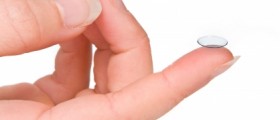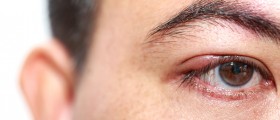
Conjunctivitis is colloquially referred to as pink eye, obviously, because of the color that the eye turns when this infection is present.
If the eye is pink, and is accompanied with symptoms of itching, stinging, irritation, pain and crusting, then it is more than likely a case of conjunctivitis.
The condition is very contagious and it is usually linked to bacterial and viral infections.
In the case of non-contagious pink eye, the cause is usually an irritant such as allergens like dust and smoke.
Contagious pink eye is often spread through sneezing or coughing in the vicinity of another person. It can also be spread through sharing towels, and simply living with another person and using the same tabletops and bathrooms.
Most often, the condition is seen in children, but it affects adults regularly as well. It is more prominent with children because they are often in classroom for extended periods of time, which is a perfect opportunity for spreading the infection.
One of the best ways to prevent pink eye is to wash one’s hands regularly. Using disinfectant spray is also a good idea, especially if a person is outdoors and not near a bathroom where washing the hands is possible.
The clear membrane that covers the white part of the eye is called the conjunctiva. It is inflamed when pink eye is present.
Even though this membrane is transparent, this is where most of the blood vessels of the eye are located. The inflammation causes the blood vessels to dilate, which leads to the pink and reddish appearance of the eye, especially since the eye provides a perfectly white background for the blood vessels to appear on.
When the cause is allergic, the eye will be itchy and red and it will tear a lot. A person’s nose might get stuffy as well.
In the case of a bacterial infection, usually both eyes are red and there is a heavy discharge excluding from them, which is sometimes greenish in color. The eyelids may crush as well.
When it is a case of viral conjunctivitis, usually one eye is infected and there is excessive watering and a light discharge noticed.
The treatment of the conjunctivitis will depend on what it was caused by. Antibiotic eye ointments and drops are prescribed for bacterial causes but will not work for a viral infection.
Viral conjunctivitis will usually clear up on its own.
When it is a case of allergic conjunctivitis, artificial tears can help, as well as antihistamine allergy pills or eye drops.
In all cases, warm compresses on the outside of the eyelid will help, along with Lubricating eye drops. This will help a person deal with the pain and itching until the condition clears up.

















Your thoughts on this
Loading...